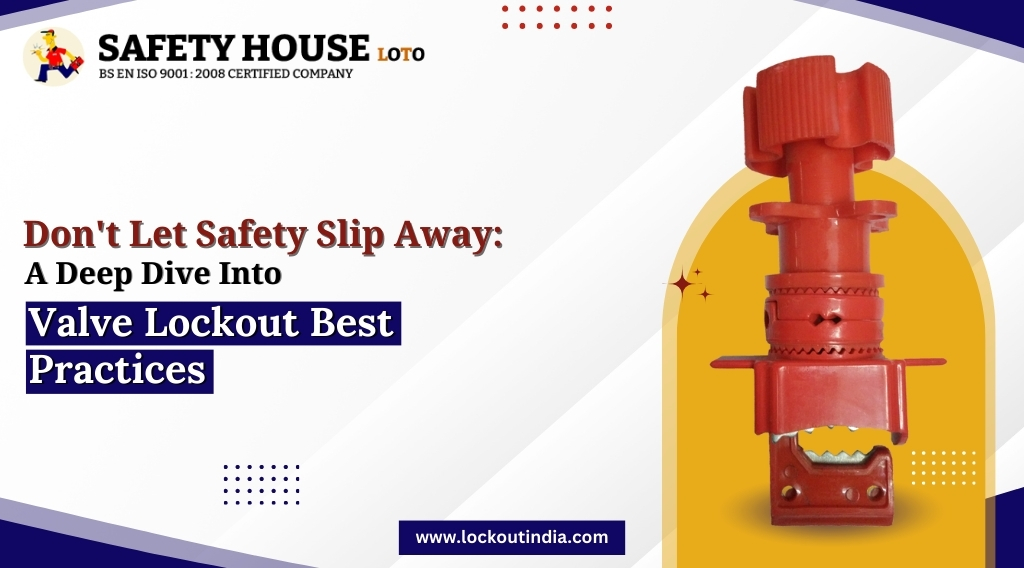
Don’t Let Safety Slip Away: A Deep Dive into Valve Lockout Best Practices
Ensuring Workplace Safety: A Close Examination of Valve Lockout Strategies
In industries where hazardous materials flow through pipelines, valves serve as crucial control points. These valves regulate the flow of liquids, gases, and other substances, ensuring smooth operation. However, when it comes to maintenance, repair, or any situation requiring valve isolation, ensuring safety becomes paramount. This is where valve lockout procedures play a vital role.
Understanding Valve Lockout
Valve lockout is a safety procedure designed to prevent the accidental or unauthorized opening of valves during maintenance or repair work. By using specialized lockout devices, such as padlocks, hasps, and tags, valves are physically locked in a closed or open position, depending on the situation. This prevents unexpected release of hazardous substances, which could lead to accidents, injuries, or environmental damage.
Importance of Valve Lockout
The importance of valve lockout cannot be overstated in industries where safety is a top priority. Failure to properly lock out valves during maintenance or repair activities can result in catastrophic consequences, including chemical spills, fires, explosions, and even loss of life. Therefore, implementing robust valve lockout procedures is essential for protecting personnel, equipment, and the environment.
Key Components of Valve Lockout
A successful valve lockout program consists of several key components:
- Lockout/Tagout (LOTO) Procedures: Comprehensive LOTO procedures should be developed and followed for each valve isolation task. These procedures should include detailed instructions on how to properly lock out valves, including the use of lockout devices and tags.
- Training and Education: Proper training and education are essential for all personnel involved in valve lockout procedures. Employees should be trained on the importance of valve lockout, how to identify lockout points, and how to use lockout devices correctly.
- Lockout Devices: Choosing the right lockout devices is crucial for effective valve lockout. Devices should be durable, tamper-resistant, and capable of withstanding the operating environment. Common lockout devices include valve lockout hasps, ball valve lockouts, and gate valve lockouts.
- Lockout Tags: Lockout tags provide essential information about the status of the valve and the reason for its lockout. Tags should be prominently displayed and include details such as the name of the authorized employee, the date of lockout, and any specific hazards associated with the valve.
Best Practices for Valve Lockout
To ensure the effectiveness of valve lockout procedures, the following best practices should be followed:
- Perform a Risk Assessment: Before initiating any valve lockout procedure, conduct a thorough risk assessment to identify potential hazards and determine the appropriate lockout measures.
- Use Standardized Procedures: Develop standardized lockout procedures for different types of valves and isolation tasks. Ensure that all employees are familiar with these procedures and follow them consistently.
- Implement a Lockout/Tagout Program: Integrate valve lockout procedures into a comprehensive Lockout/Tagout (LOTO) program to ensure consistency and compliance with regulatory requirements.
- Provide Adequate Training: Train all personnel involved in valve lockout procedures on the proper use of lockout devices, the importance of following procedures, and the potential consequences of failure to lock out valves.
- Regular Inspections and Audits: Conduct regular inspections and audits to ensure that valve lockout procedures are being followed correctly. Address any deficiencies or non-compliance issues promptly.
Compliance with Regulations
Compliance with relevant regulations and standards is essential for ensuring the effectiveness of valve lockout procedures. In the United States, the Occupational Safety and Health Administration (OSHA lock) has established specific requirements for lockout/tagout procedures under 29 CFR 1910.147. Similarly, other regulatory bodies around the world have their own guidelines governing lockout procedures. It is imperative for organizations to familiarize themselves with these regulations and ensure compliance to avoid penalties and legal consequences.
Conclusion
Valve lockout is a critical safety procedure that plays a vital role in preventing accidents, injuries, and environmental damage in industries where hazardous materials are present. By implementing robust lockout procedures, providing adequate training, and ensuring compliance with regulations, organizations can protect their personnel, equipment, and the environment from potential harm. Remember, safety should never be compromised, and valve lockout is a crucial step in safeguarding against unforeseen hazards.
